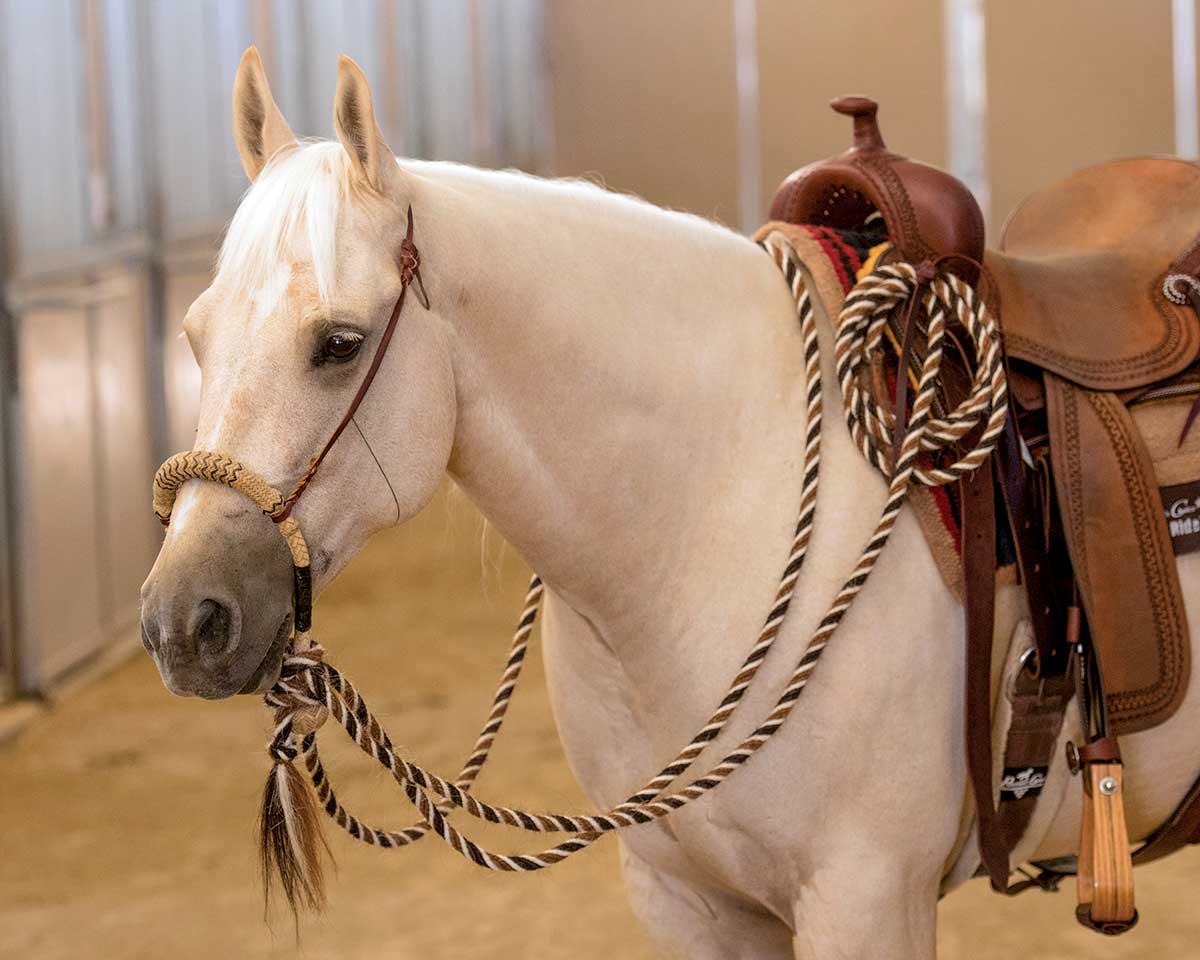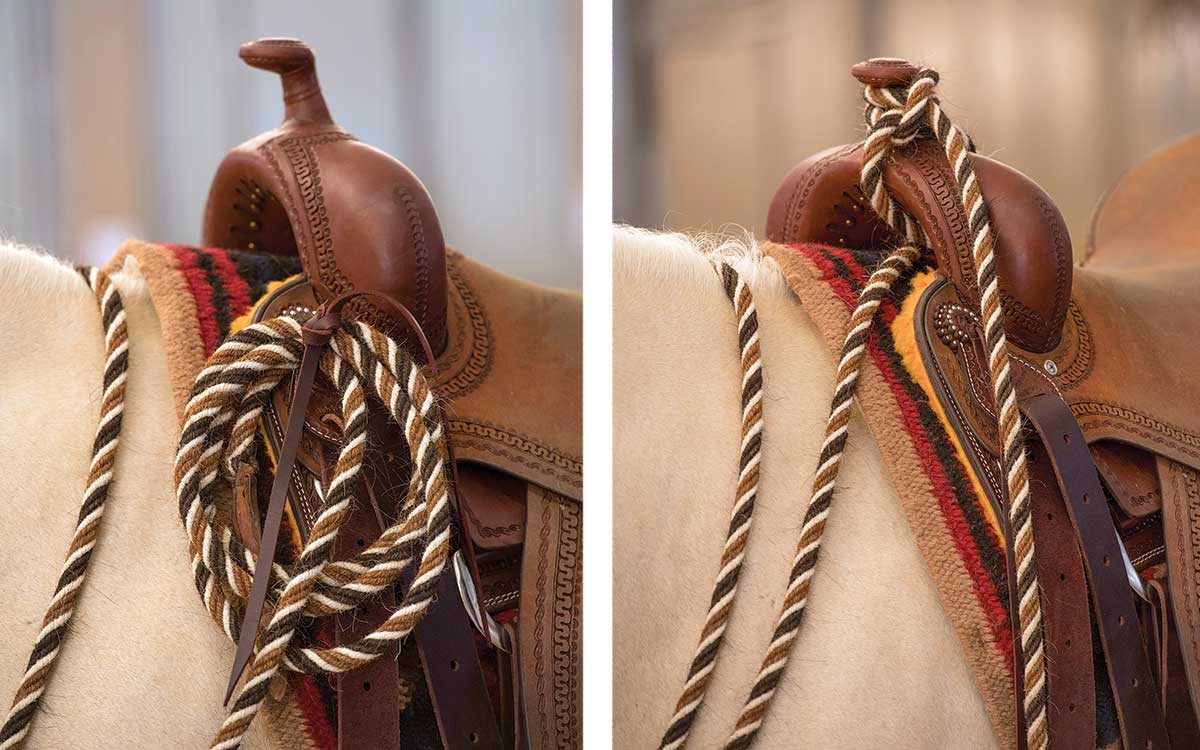
Tack honors tradition, as exemplified by the mecate, the 22-foot-long horsehair rope that makes up the loop rein and tie rope attached to a hackamore.
Historically, the tie rope served a vital function. Ranch cowboys were on and off their horses regularly when working cattle, and so they needed a way to easily and securely tie their hackamore horses to a fence or a tree.
In modern horsemanship, the horses shown in hackamores probably aren’t tied out on the range, but the riders still hold to tradition and use the tie rope as part of their hackamore setup.


No matter if you’re a ranch cowboy who uses the tie rope or a competitor who shows in a hackamore, you still must secure that tie rope when you’re in the saddle. Here, I’ll explain the four ways to keep your mecate’s tie rope from getting in the way of your riding when using a hackamore.
Note that the tie rope must be left with enough slack in the length that it doesn’t restrain your horse’s neck movement, but short enough that your horse can’t step on the tie rope or somehow become entangled in it. Your tie rope will always attach on your horse’s left side. (Historically, a cowboy’s lariat or reata would be attached to the right side of the saddle.)
Al Dunning, Scottsdale, Arizona, has produced world champion horses and riders in multiple disciplines. He’s been a professional trainer for more than 40 years, and has produced books, DVDs, and an online mentoring program, Team AD International (aldunning.com).
Horsehair Rope
Traditional mecates are made from mane or tail hair. This isn’t just for looks—it serves a function. The hackamore phase of training focuses on teaching your horse neck-reining to advance his training from the direct pull of a snaffle. If you’ve held a horsehair mecate in your hands, you know it’s quite prickly. So much so, that traditionally, riders wear gloves when using the equipment. You horse feels that prickliness when you lay the rein against his neck to teach him to neck-rein, and he instinctively moves away from it. The prickles from the horsehair help to reinforce the neck-rein cue.
Today you can find mecates made of nylon cord, mohair, and other materials. I prefer horsehair because it adds to the feel when teaching your horse to move away from the neck-rein cue.






